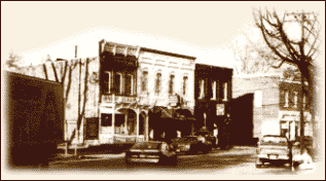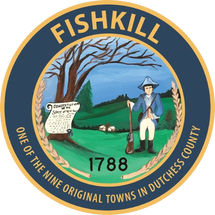Town History

Arnold Restivo - Email
Phone: (845) 831-7800 ext. 3507
Welcome to the Town of Fishkill Historian's page! For over 300 years the Town of Fishkill has bared witness to come of the nation's most significant moments in history. Once the site of a major Native American settlement, Fishkill has since been dubbed the "Crossroads of the American Colonies," our town served as the Capital of New York for a period of time and was home to the first Post Office in New York. George Washington established the largest supply depot and encampment here which lasted from 1776-1783. During the Industrial Revolution, mills and factories popped up along the Fishkill Creek increasing the town's stature during this time. Our office is here to serve you on any questions or research inquiries that you may have about the history of the Town of Fishkill. Please fee free to stop by in Town Hall to talk history!
In 1683, nineteen years after the Dutch surrendered New Amsterdam to the English, two New York City merchants, Frances Rombout and Gulian Verplanck, purchased 85,000 acres in Dutchess County from the Wappinger Indians for a quantity of rum, powder, cloth, hatchets, shirts, knives, bottles, white wampum, earthen jugs and 80 pounds of tobacco. Rombout and Verplanck never lived on their land, intending to use it only for fur trading. The first white settlers were Rombout's daughter, Catharyna and her husband, Roger Brett, who built a mill at the mouth of the Fishkill Creek as it flows into the Hudson. Their house, built about 1709, still stands in Beacon, and is the oldest continuous residence in Dutchess County. The name Fishkill is derived from two Dutch words: Vis (fish) and Kill(creek or stream).
Fishkill played an important role in the Revolutionary War when a vast military encampment was established one mile below the village to guard the mountain pass to the south. Signal fires lay in readiness on tops of the surrounding mountains. The Fishkill encampment became the main supply depot for the northern division of the Continental Army. The first 1,000 copies of the New York State Constitution were turned out on Samuel Loudon's press at Fishkill in 1777. Trinity Episcopal Church became a hospital for soldiers recovering from smallpox, and the Dutch Reformed Church was used as a military prison.
During the 19th century mills and factories sprang up in Glenham and Matteawan. The Glenham Woolen Mill, which brought an influx of skilled weavers from the British Isles, made the hamlet of Glenham a busy industrial center. The healthy economy enjoyed by the mills came to an end in the post-Civil War depression and the once thriving factories fell into decay. New life came in 1931 when Texaco purchased the old woolen mill site and established a research center there. Today, the town's industry is technology based and the farmland has been converted to residential housing. But the beauty of the area continues to attract new people, diversified businesses and tourists.
HISTORIC SITES
Van Wyck Homestead Museum
Location: 509 Route 9 at the junction of Routes I-84 and 9, Fishkill.
E-Mail Address: [email protected]
Requisitioned by the Continental Army during the Revolutionary War, the Dutch Colonial homestead was built in 1732 and an addition was constructed c. 1757. This is reputed to be the setting of James Fenimor Cooper's novel The Spy. The homestead museum includes a research library, genealogical library and a gift shop in addition to a collection of Hudson Valley portraits by Ammi Phillips. Tours are gladly conducted. There are School Programs for all ages. Program features are the Revolutionary War and Fishkill history, Age of Homespun - hands on weaving and spinning, Architecture and building skills and Colonial Kitchen. Open Saturday and Sunday, 1pm-4pm from the first weekend in June until the last weekend in October. Other times available by appointment. Bus tours are welcome. Please call 845-896-9560 for more information.
First Reformed Protestant Dutch Church of Fishkill
Location: 55-63 Main Street, Fishkill.
The original 1731 building was the meeting place for the New York Provincial Congress and also served as a prison during the Revolutionary War. The church is open year round for Sunday worship at 10:00am. Tours are available by appointment. Groups are welcome. Call 845-896-9836 for more information.
Mount Gulian Historic Site
Location: 145 Sterling Street, Beacon.
This restored 18th century homestead was the Revolutionary war headquarters of General von Steuben and the birthplace of the Society of Cincinnati. The home sits on 14 acres and offers a variety of activities and special events, including changing exhibits, classes and meetings. Open April to December, Wednesday and Sunday 1 to 5 PM, with extended summer hours. Tours are available. Groups are welcomed by appointment. There is an admission charge. Call 845-831-8172 for more information.
Phone: (845) 831-7800 ext. 3507
Welcome to the Town of Fishkill Historian's page! For over 300 years the Town of Fishkill has bared witness to come of the nation's most significant moments in history. Once the site of a major Native American settlement, Fishkill has since been dubbed the "Crossroads of the American Colonies," our town served as the Capital of New York for a period of time and was home to the first Post Office in New York. George Washington established the largest supply depot and encampment here which lasted from 1776-1783. During the Industrial Revolution, mills and factories popped up along the Fishkill Creek increasing the town's stature during this time. Our office is here to serve you on any questions or research inquiries that you may have about the history of the Town of Fishkill. Please fee free to stop by in Town Hall to talk history!
In 1683, nineteen years after the Dutch surrendered New Amsterdam to the English, two New York City merchants, Frances Rombout and Gulian Verplanck, purchased 85,000 acres in Dutchess County from the Wappinger Indians for a quantity of rum, powder, cloth, hatchets, shirts, knives, bottles, white wampum, earthen jugs and 80 pounds of tobacco. Rombout and Verplanck never lived on their land, intending to use it only for fur trading. The first white settlers were Rombout's daughter, Catharyna and her husband, Roger Brett, who built a mill at the mouth of the Fishkill Creek as it flows into the Hudson. Their house, built about 1709, still stands in Beacon, and is the oldest continuous residence in Dutchess County. The name Fishkill is derived from two Dutch words: Vis (fish) and Kill(creek or stream).
Fishkill played an important role in the Revolutionary War when a vast military encampment was established one mile below the village to guard the mountain pass to the south. Signal fires lay in readiness on tops of the surrounding mountains. The Fishkill encampment became the main supply depot for the northern division of the Continental Army. The first 1,000 copies of the New York State Constitution were turned out on Samuel Loudon's press at Fishkill in 1777. Trinity Episcopal Church became a hospital for soldiers recovering from smallpox, and the Dutch Reformed Church was used as a military prison.
During the 19th century mills and factories sprang up in Glenham and Matteawan. The Glenham Woolen Mill, which brought an influx of skilled weavers from the British Isles, made the hamlet of Glenham a busy industrial center. The healthy economy enjoyed by the mills came to an end in the post-Civil War depression and the once thriving factories fell into decay. New life came in 1931 when Texaco purchased the old woolen mill site and established a research center there. Today, the town's industry is technology based and the farmland has been converted to residential housing. But the beauty of the area continues to attract new people, diversified businesses and tourists.
HISTORIC SITES
Van Wyck Homestead Museum
Location: 509 Route 9 at the junction of Routes I-84 and 9, Fishkill.
E-Mail Address: [email protected]
Requisitioned by the Continental Army during the Revolutionary War, the Dutch Colonial homestead was built in 1732 and an addition was constructed c. 1757. This is reputed to be the setting of James Fenimor Cooper's novel The Spy. The homestead museum includes a research library, genealogical library and a gift shop in addition to a collection of Hudson Valley portraits by Ammi Phillips. Tours are gladly conducted. There are School Programs for all ages. Program features are the Revolutionary War and Fishkill history, Age of Homespun - hands on weaving and spinning, Architecture and building skills and Colonial Kitchen. Open Saturday and Sunday, 1pm-4pm from the first weekend in June until the last weekend in October. Other times available by appointment. Bus tours are welcome. Please call 845-896-9560 for more information.
First Reformed Protestant Dutch Church of Fishkill
Location: 55-63 Main Street, Fishkill.
The original 1731 building was the meeting place for the New York Provincial Congress and also served as a prison during the Revolutionary War. The church is open year round for Sunday worship at 10:00am. Tours are available by appointment. Groups are welcome. Call 845-896-9836 for more information.
Mount Gulian Historic Site
Location: 145 Sterling Street, Beacon.
This restored 18th century homestead was the Revolutionary war headquarters of General von Steuben and the birthplace of the Society of Cincinnati. The home sits on 14 acres and offers a variety of activities and special events, including changing exhibits, classes and meetings. Open April to December, Wednesday and Sunday 1 to 5 PM, with extended summer hours. Tours are available. Groups are welcomed by appointment. There is an admission charge. Call 845-831-8172 for more information.


